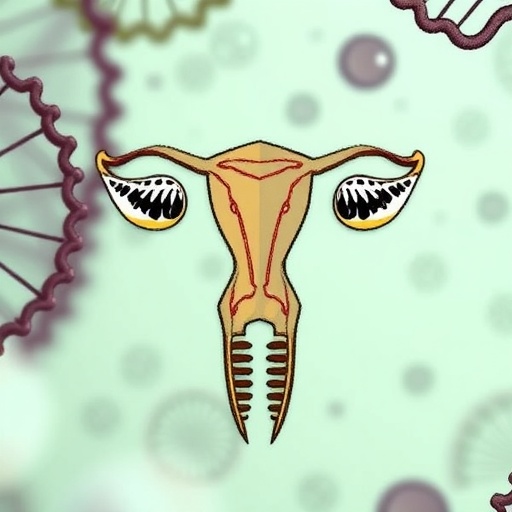In a groundbreaking study emerging from the University of Hawaiʻi at Mānoa, researchers at the John A. Burns School of Medicine (JABSOM) have revealed pivotal insights into male infertility by decoding the molecular underpinnings controlled by a crucial gene located on the Y chromosome. This investigation, spearheaded by Professor Dr. Monika Ward from the Department of Anatomy, Biochemistry & Physiology as well as the Yanagimachi Institute for Biogenesis Research (YIBR), provides an unprecedented look at the consequences stemming from the loss of the zinc finger Y-encoded gene, known as Zfy, a gene integral to male fertility across species including mice and humans.
The study’s focus was the gene Zfy, which interestingly exists as two paralogs in mice: Zfy1 and Zfy2. Both genes encode transcription factors essential for regulating target genes in male germ cells, and their combined function had remained somewhat elusive until now. By deploying the cutting-edge gene-editing tool CRISPR-Cas9, the team crafted knockout mouse models deficient in Zfy1, Zfy2, or both—termed the Zfy double knockout (DKO). This precise genetic manipulation allowed for a direct assessment of how each gene contributes to spermatogenesis and fertility, a realm of biology critical for understanding male reproductive health.
What the researchers discovered was profound: male mice lacking both Zfy1 and Zfy2 were rendered completely infertile, exhibiting drastically abnormal sperm phenotypes. In the most severe DKO cases, males failed to produce sperm altogether. This seminal finding illuminated the indispensable role that Zfy genes play in male fertility and sparked deeper inquiries into the biological cascades controlled downstream of these transcription factors. These initial results, first published in the journal Biology of Reproduction in 2022, set the foundational knowledge for subsequent mechanistic studies.
To further unravel the molecular ramifications of Zfy loss, the team utilized Assisted Reproductive Technologies (ART), specifically intracytoplasmic sperm injection (ICSI) and round spermatid injection (ROSI)—methods pioneered by the renowned reproductive biologist Ryuzo Yanagimachi at the University of Hawaiʻi. These technologies allowed the generation of more Zfy DKO males to support ongoing research despite their infertility. The innovative application of these ART methods in this genetically altered model underscores the synergy between advanced reproductive techniques and genetic research.
The new study, published on August 27, 2025, in the highly respected journal Cell Death and Differentiation, harnessed large-scale transcriptomic analyses to chart the widespread gene expression disruptions ensuing from the absence of Zfy proteins. The loss of Zfy led to deregulation of hundreds of genes, either excessively expressed or suppressed below normal levels. Crucially, these perturbed genes encompassed key regulators of spermatogenesis, DNA packaging within sperm nuclei, and apoptosis pathways, indicating a multifaceted influence on male reproductive cell development.
Further, the research uncovered that sperm precursor cells within the testes of Zfy DKO males underwent premature cell death, a phenomenon that devastates the germ cell population before maturation can occur. For any sperm that were produced, their DNA integrity was compromised due to insufficient condensation—a process vital for protecting genetic material from damage. These molecular defects provide a compelling explanatory framework for the infertile phenotype observed and highlight the critical regulatory functions Zfy transcription factors exert over genomic integrity in male germ cells.
Dr. Ward commented on the implications of this work, emphasizing how it expands our understanding of Zfy’s role beyond a simple fertility factor to a master regulator orchestrating a network of genes essential for sperm production and quality. The identification of these downstream pathways offers promising avenues for future studies aimed at devising targeted therapeutic interventions for male infertility, a condition affecting millions worldwide.
The study exemplifies the essential contributions of student researchers, with Hayden Holmlund, a recent PhD graduate from the Developmental and Reproductive Biology (DRB) graduate program, serving as first author and driving much of the experimental work. His ongoing postdoctoral research in California continues to delve deeper into Zfy function. Additionally, undergraduate INBRE student Benazir Yarbabaeva has transitioned to graduate studies in DRB to further explore the nuances of Zfy DKO sperm biology, demonstrating the project’s role in nurturing the next generation of reproductive biologists.
This international collaborative effort included contributions from colleagues in France and England, underscoring the global relevance of the questions addressed and the shared commitment to advancing reproductive medicine. Beyond the immediate implications for understanding male germ cell biology, the research has translational potential, offering a pathway toward improved management and treatment of male infertility through molecular insights derived from robust mouse models.
The meticulous combination of CRISPR gene-editing, ART methodologies, and transcriptomic technologies employed in this study exemplifies the power of integrative approaches in tackling complex biological problems. By mapping how the absence of Zfy disrupts gene regulatory networks, the researchers have provided a rich dataset and biological framework that future studies can exploit to unravel additional layers of control governing male fertility.
In summary, the University of Hawaiʻi at Mānoa team’s work critically advances our comprehension of male fertility genetics, spotlighting Zfy as a central transcriptional hub in sperm development and viability. This breakthrough paves the way for novel diagnostic markers and potential therapeutic targets, offering hope to individuals facing infertility challenges rooted in molecular dysfunction. As reproductive health continues to be a global health priority, these findings represent a significant milestone in decoding the genetic orchestrators behind male germ cell maturation.
Subject of Research: Animals
Article Title: Large-scale transcriptomic analyses reveal downstream targetgenes of ZFY1 and ZFY2 transcription factors in male germ cells
News Publication Date: 27-Aug-2025
Web References: http://dx.doi.org/10.1038/s41418-025-01569-6
References: Published in Cell Death and Differentiation
Keywords: Genetics




